Minecraft spawners are cage-like blocks that continuously spawn mobs, making them essential for building efficient mob farms in 2025. These structures are key to automating resource collection, creating Minecraft XP farms, and gathering rare drops like blaze rods or spider eyes. Spawners activate every 10-40 seconds within a 4-block radius when a player is within 16 blocks and the light level is 7 or lower (except for silverfish). This mob farm guide lists all Minecraft spawners, explains how to find them, and explores their uses for advanced gameplay. Note: Spawners cannot be obtained in Survival mode, even with Silk Touch. When broken with a pickaxe, they drop 15-43 experience orbs but no block. In Creative mode, use /give @p minecraft:spawner to obtain one or modify spawners with spawn eggs.
Table of Contents
1. Zombie Spawner
Zombie Spawners, with a 50% chance to appear in dungeons, are the most common spawner type. They’re perfect for building a Minecraft XP farm or farming Rotten Flesh, Iron Ingots, and occasionally armor or tools. By drowning zombies, players can create a Drowned farm for copper ingots or rare nautilus shells, enhancing resource automation.
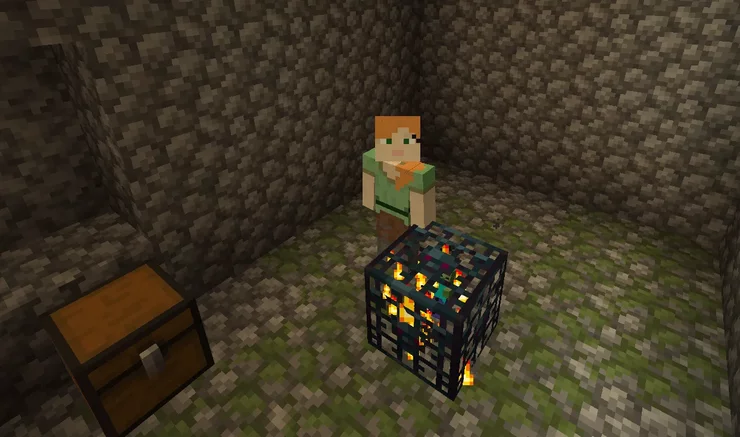
Dungeons are small underground structures (5x5 or 7x7 blocks) not locatable with the /locate command. To find a zombie spawner, explore caves, listen for zombie groans, or use a Minecraft dungeon finder like Chunkbase. Enter your world seed on Chunkbase to map potential dungeon locations, but verify in-game as accuracy varies. Enable subtitles to detect mob sounds visually.
2. Skeleton Spawner
Skeleton Spawners have a 25% chance to spawn in dungeons, making them rarer than zombie spawners. They’re ideal for bone meal farms (for crops or dyes) and yield arrows, bows, and armor. A skeleton spawner is a top choice for a Minecraft XP farm due to the mob’s consistent spawn rate and moderate health.
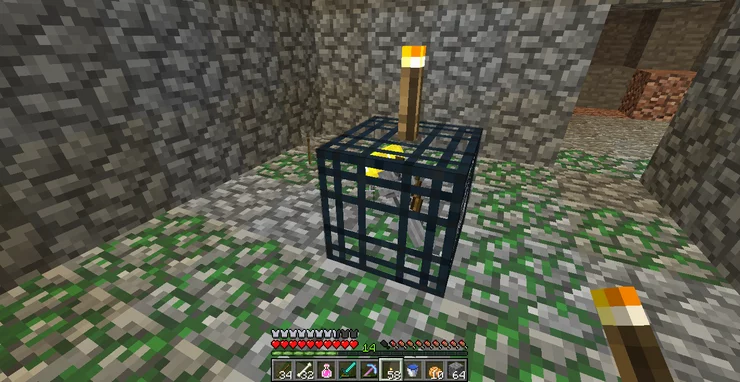
Locate skeleton spawners in dungeons using cave exploration, skeleton clanking sounds, or Chunkbase’s dungeon finder. Subtitles in Minecraft settings can help pinpoint spawner locations.
3. Spider Spawner
Spider Spawners, with a 25% chance to appear in dungeons, can also spawn in Woodland Mansions’ secret “spider rooms” on the 2nd or 3rd floor, surrounded by cobwebs. They’re great for farming string (for bows, fishing rods, or wool) and spider eyes (for potions). These spawners are less common but valuable for specific crafting needs in a mob farm guide.
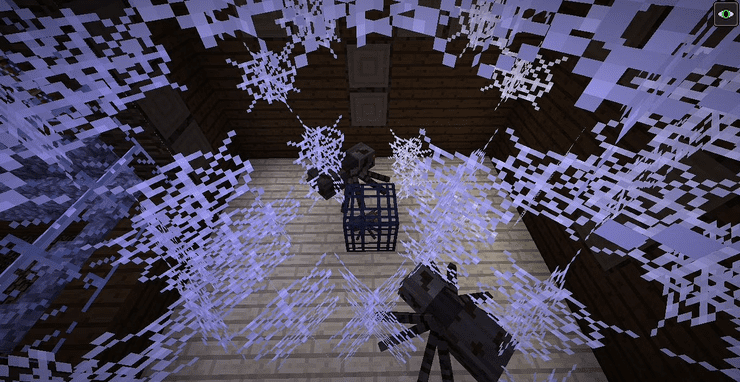
Find dungeons as described above. For Woodland Mansions, use /locate structure minecraft:mansion (with cheats enabled) or trade with a cartographer villager for a Woodland Explorer Map. Mansions generate in Dark Forest biomes, often thousands of blocks from spawn. Check windows or break the roof to spot the cobweb-filled spider room.
4. Cave Spider Spawner
Cave Spider Spawners, found only in Mineshafts amid dense cobwebs, spawn smaller, green spiders that inflict poison. They drop string and spider eyes, like regular spiders, and their compact size makes them ideal for compact Minecraft XP farms. Their poison effect requires careful farm design, such as using water to neutralize attacks.
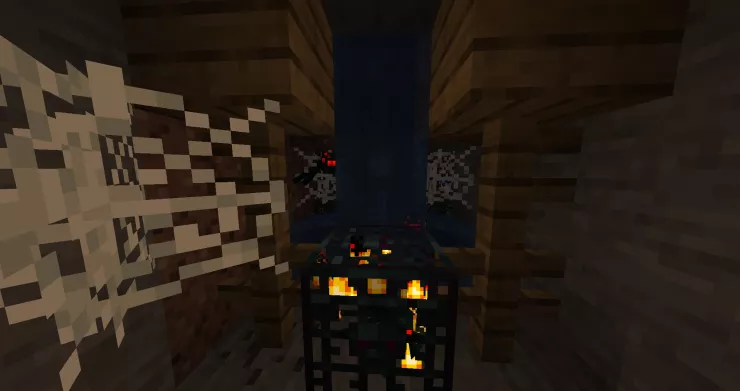
Mineshafts generate underground in any Overworld biome or on the surface in Badlands. Explore abandoned passageways, listen for spider hisses, or use subtitles to locate the spawner.
5. Silverfish Spawner
Silverfish Spawners appear only in Stronghold End Portal rooms. They spawn silverfish at light level 11 or lower, or on stone-type blocks (stone, cobblestone, stone bricks) at any light level, within 5 blocks of a player. Silverfish drop no items, making them more of a nuisance than a farming resource, so most players destroy these spawners. Use a Silk Touch pickaxe to mine nearby infested blocks without triggering spawns.
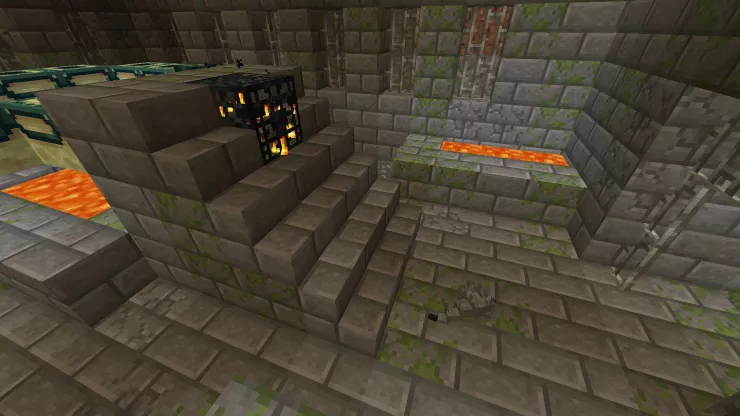
To locate a Stronghold, throw Eyes of Ender to follow their path, digging where they sink. You’ll need 12 Eyes to activate the End Portal. Listen for silverfish hisses or lava sounds to find the portal room. Crafting Eyes of Ender:
- Kill Endermen for 12-15 Ender Pearls.
- Obtain Blaze Rods from Blazes and craft into Blaze Powder.
- Craft Eyes of Ender using 1 Ender Pearl + 1 Blaze Powder each.
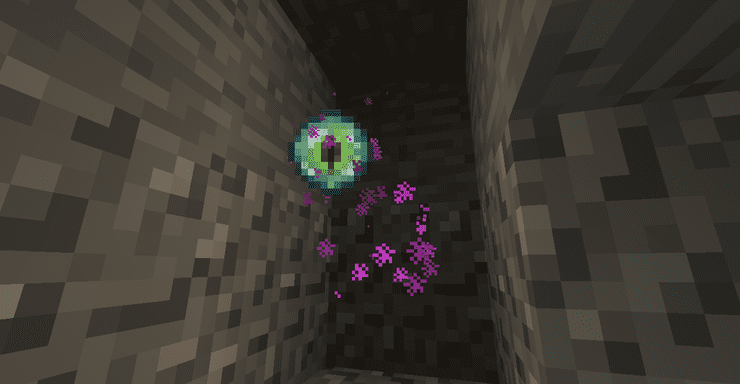
6. Blaze Spawner
Blaze Spawners generate in Nether Fortresses on fenced platforms with 3-block-high Nether brick stairs, typically 1-2 per fortress. Blazes drop Blaze Rods, crucial for brewing potions (e.g., Strength, Fire Resistance) and crafting Eyes of Ender. Their high XP yield makes them a top choice for a Minecraft XP farm.

Nether Fortresses spawn more frequently on the positive X-axis in the Nether. Travel north or south while keeping X positive, listen for Blaze’s metallic breathing, or use /locate structure minecraft:fortress with cheats enabled.
7. Magma Cube Spawner
Magma Cube Spawners appear in Bastion Remnant treasure rooms, suspended by chains over lava pools. Magma Cubes drop Magma Cream, used for Fire Resistance potions and crafting magma blocks. These spawners are excellent for Nether-based mob farm guides and potion crafting.
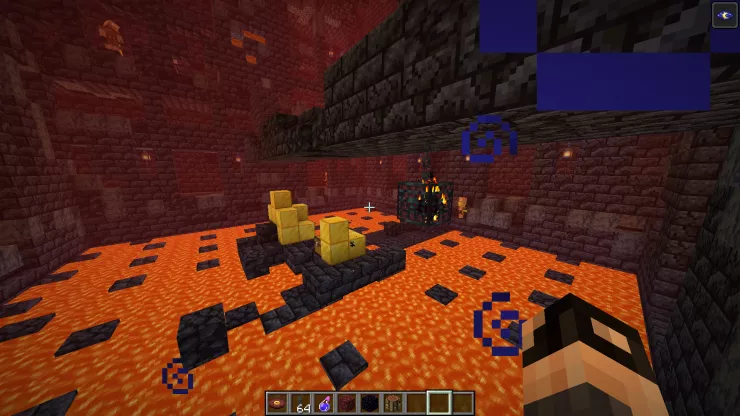
Bastion Remnants are blackstone structures in Nether Wastes, Soul Sand Valley, Warped Forest, or Crimson Forest. Navigate to the treasure room and listen for Magma Cube “squish” sounds. Use /locate structure minecraft:bastion_remnant if cheats are enabled.
Uses of Minecraft Spawners in 2025
Minecraft spawners are a cornerstone of advanced gameplay, enabling players to create automated systems for resources, XP, and defense. Here’s how to leverage them effectively in your mob farm guide:
- XP Farming: Spawners produce consistent mob spawns, ideal for Minecraft XP farms. Blaze and skeleton spawners are particularly efficient due to high XP drops. Build a killing chamber with water streams or fall damage to automate XP collection.
- Resource Automation: Each spawner type yields specific drops:
- Zombie Spawner: Rotten Flesh for villager trading, Iron Ingots, or Drowned conversion for copper/nautilus shells.
- Skeleton Spawner: Bones for bone meal, arrows, and bows for archery or dispensers.
- Spider/Cave Spider Spawner: String for crafting (e.g., bows, fishing rods) and spider eyes for potions (e.g., Poison).
- Blaze Spawner: Blaze Rods for potions and Eyes of Ender, critical for End progression.
- Magma Cube Spawner: Magma Cream for Fire Resistance potions and magma blocks for decoration or bubble columns.
- Redstone Contraptions: Spawners can power redstone systems. For example, use spider string to craft sticky pistons or redstone repeaters. Cave spider farms can supply string for automated dispensers in defense systems.
- Base Defense: Place spawners near your base to create controlled mob spawns for defense. For example, a zombie spawner farm can produce mobs to trigger traps against hostile players in multiplayer. Light up the area (light level 8+) to disable spawning when not in use.
- Trading and Bartering: Use spawner drops for villager trading (e.g., Rotten Flesh for emeralds) or bartering with Piglins (e.g., string or blaze rods). This enhances economic gameplay in survival worlds.
- Creative Challenges: Spawners add difficulty in structures like Strongholds or Mineshafts. Use them to create custom challenges or adventure maps in Creative mode by modifying spawner types with spawn eggs.
Tips for Using Spawners: Control spawns by managing light levels (torches to disable, darkness to activate). Build farms with water channels, hoppers for item collection, and killing mechanisms (e.g., lava blades, fall damage). Ensure the player stays within 16 blocks to keep the spawner active. For advanced designs, incorporate redstone timers or pistons to optimize efficiency.










Comments